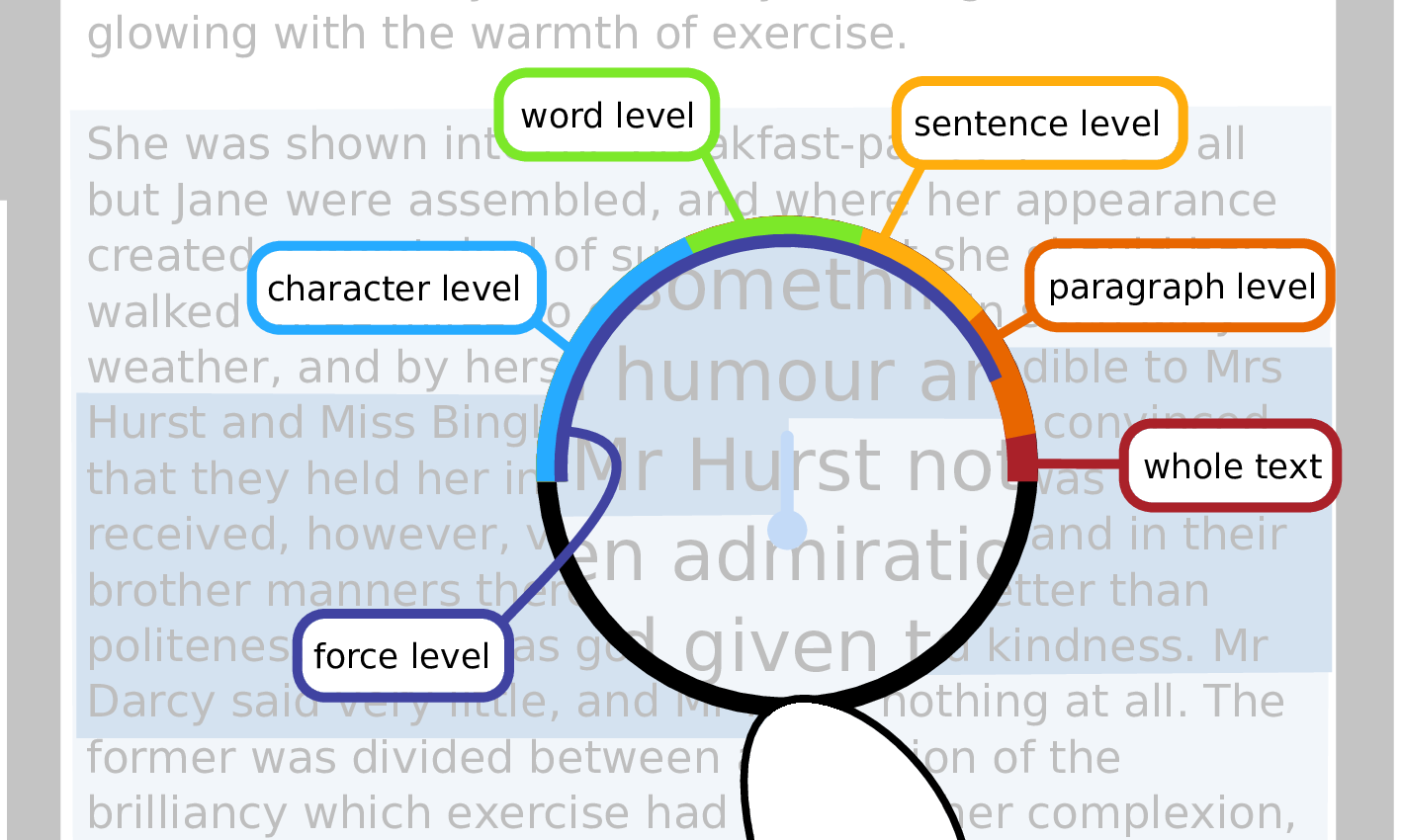Section: New Results
Macro-dynamics
Participants : Stéphane Huot, Sylvain Malacria [correspondent] , Nicole Pong.
One conspicuous feature of the current evolution of interactive devices is the spread of touch-sensitive surfaces. Typically, modern smartphones are equipped with such touch-sensitive surfaces that also support normal force-based input capabilities, which can for instance be used to control the range of a text selection by varying the force applied to the touchscreen (on e. g., iOS devices). However, this interaction mechanism is difficult to discover and many users simply ignore it exists. To overcome this problem, we introduced ForceSelect (see Figure 6, left), a force-based text selection techniques that relies on a simple mode gauge (see Figure 6, right) that does not require additional screen real-estate and help users to discover and master the use of force input in text selection tasks [22]. We conducted two studies that suggest that this mode gauge successfully provides enhanced discoverability of the force-based input and combines support for novices and experts, whereas it was never worse than the standard iOS technique and was also preferred by participants.
|




